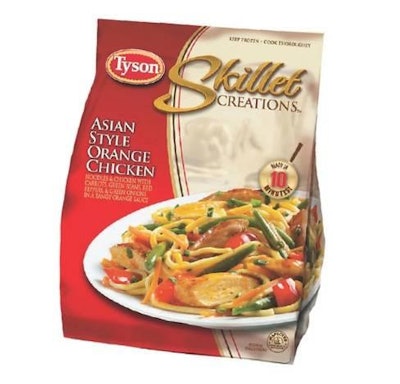
Tyson Foods Inc., the nation's second largest broiler producer, says that it has no plans to cut its broiler production below the levels the company reduced to at the end of 2008. "Our production figures are about where we want to leave them as we speak," said Leland Tollett, interim president and CEO, Tyson Foods Inc. "Historically we have not seen that a reduction in our volume has resulted in anything positive for our company." Tyson executives speaking at a conference held in conjunction with a February shareholders meeting said that the company is aggressively working to develop new products and improve customer service while expanding its international operations; it will not sit back and rely on reductions in industry-wide slaughter volumes to return it to profitability on the chicken side of its business. Tyson grew to be the world's largest meat company by being aggressive and opportunistic; it may be that the old Tyson is back.
Donnie Smith, senior group vice president, poultry and prepared foods, explained why the company has no stomach for further broiler production cuts. "Using WATT PoultryUSA data on ready-to-cook (RTC) pounds, our numbers have declined 5-7% from 2000 to 2008 on RTC pounds while at the same time the industry has grown 31%. Over time, we have done plenty of cutting back," Smith said. In 2008, several broiler companies cut back on chick placements starting in the summer in response to high grain prices and relatively weak commodity chicken prices. Tyson made placement cuts through the summer and into the fall, which created angst for some poultry industry stock analysts.
Smith said that Tyson's position on production cuts last year was consistent. "We have said repeatedly this year, as long as our supply and demand matched, we weren't going to cut production. Through our fourth quarter (which ended September 27, 2008) the supply and demand did match. During the latter part of our first quarter, in the latter part of November and into December, we began to see our demand get hit pretty hard for our products, so inventory began to build. At that time early in December, we decided to cut our production 5% until we cleared this inventory." He said that as the chick placement cuts have made it to slaughter, the company has seen inventories begin to fall. Ultimately, Smith said that when finished product inventories are reduced to target levels that production will be ramped back up. "We are going to be growing our business," he said.
Tyson back on top?
One company that has taken a markedly different stance than Tyson on production cutbacks is Pilgrim's Pride Corp. Currently the nation's largest broiler producer, Pilgrim's Pride, announced two production cutbacks in 2008. In late February of 2009, Pilgrim's Pride announced that it would reduce its RTC production by 9-10% in mid-May. This move should reduce the industry's total RTC production by 2-2.2%, according data published in the February 2009 WATT PoultryUSA Top Broiler Company Survey issue. Dr. Paul Aho, agribusiness expert, said that he liked the timing of Pilgrim's production cut because it may give the market a boost heading into the summer, when chicken markets tend to reach their seasonal peaks.
The most recent round of plant closings should bring Pilgrim's Pride's total weekly RTC volume down to about the same level as Tyson's, around 143 million RTC pounds per week. Pilgrim's Pride has not emerged from bankruptcy protection yet, and many in the industry are waiting to see if any further assets will be sold or closed as part of the company's reorganization efforts.
New products
Tollett said that one of the areas that Tyson is focusing on to drive sales is new product development. Hal Carper, group vice president research and development, logistics and technical services, said that Tyson has created over $1 billion in new sales in the two years since the company opened its Discovery Center. Skillet Sensations meal kits, which are in an entirely new category for Tyson, are one example. The meal kits are designed for two people and are low in fat, cholesterol, salt and calories They are targeted at aging baby-boomers who are more conscious of their health and are looking for quick, healthy, easy-to-prepare meals to eat at home.
On the foodservice side of the business, customers are looking for more, for, less money, according to Carper. They want premium-value, not just lower price. Examples given were the Home-Style Breaded Chicken Tenders which are not solid muscle products but are produced with a new technology that gives the bite of an unchopped whole-muscle product. Right-Sized Breaded Fillets offer smaller portions to keep sandwich prices affordable.
International expansion
Tollett said that Tyson is committed to expanding its international business and sees this as a significant part of its long-term strategy. Rick Greubel, group vice president and international president, said that there are three primary reasons why international operations make sense for Tyson. First, Tyson expects that global protein consumption will increase by 25% in the next 25 years, according to Greubel. Most of this growth will be in emerging or developing markets.
"The second reason (for expanding international business) is some lower cost of production that we can see in different markets around the world," Greubel said. "The third reason is access to export markets that we don't currently enjoy from the U.S."
Tyson now has joint ventures in China, India and Brazil and has operations in Mexico. (see sidebar).
















